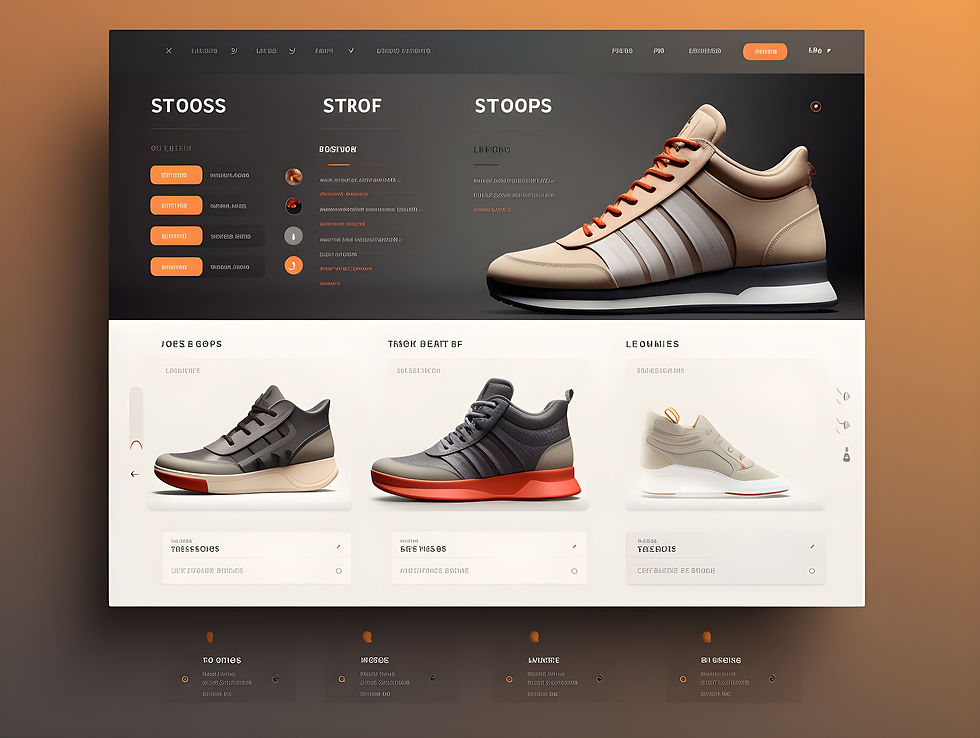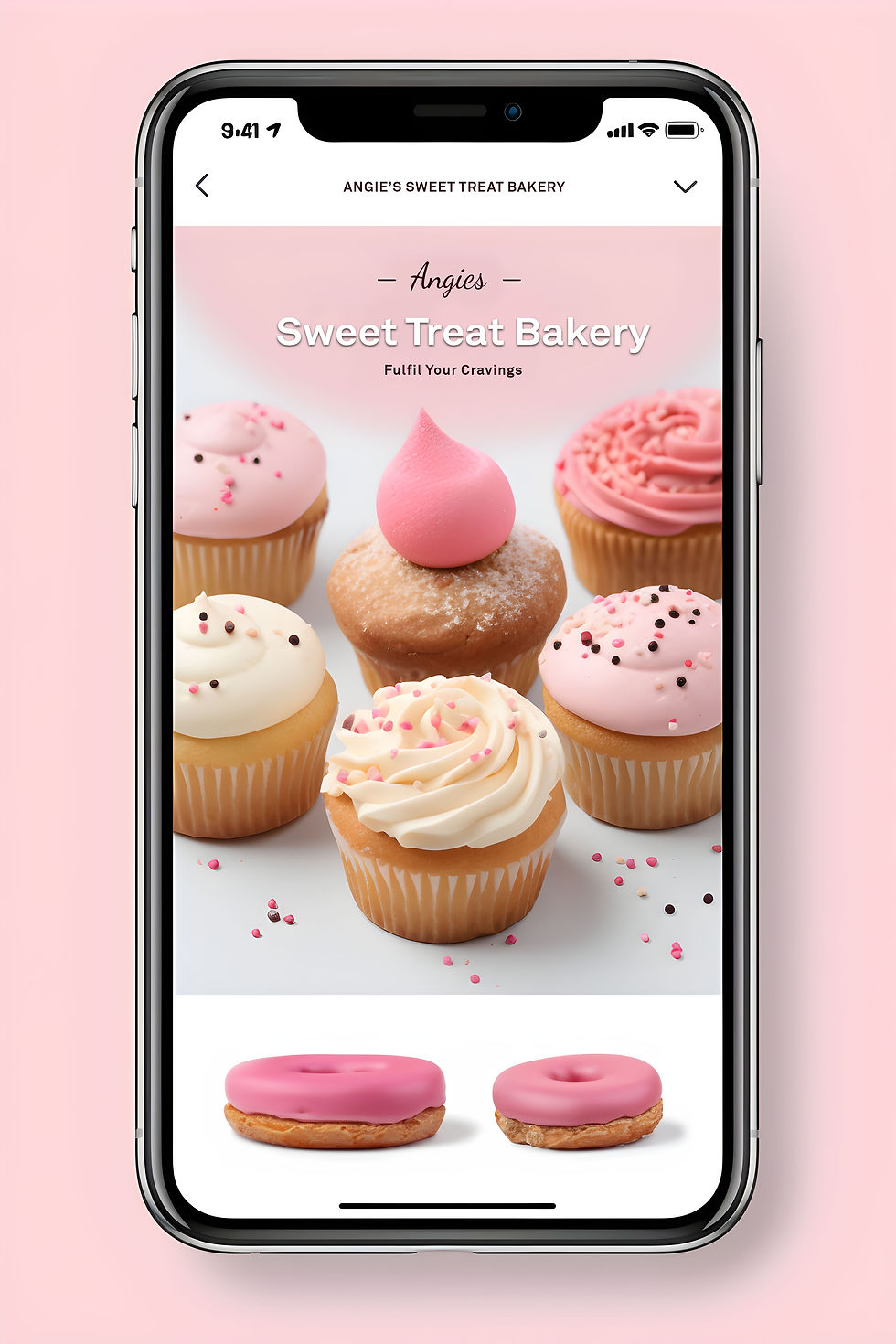
Have you ever wondered what makes the apps and websites you use every day feel so smooth and easy to navigate? Or maybe you have ended up screaming "WHERE IS <Enter Menu Name here>???" From tapping buttons to swiping screens, someone has carefully crafted each digital interaction to create an enjoyable user experience.
In this beginner's guide, we'll unravel the secrets behind delightful digital design and dive into:
What is UI/UX Design?

Before we get started, let's decode the jargon. UI stands for User Interface - these are the visual elements like buttons and menus. UX is User Experience – how users feel navigating the app. UI is the stage, UX is the story.
Together, UI/UX design creates interfaces and experiences that captivate users. It's the art behind apps that make you smile and websites you revisit, like Figma, a handy design space for UI mockups.
3 Key Things to Learn
Empathizing with users - understanding their needs, likes, and pains. It's about perspective-taking, not mind-reading! Nielsen Norman Group provides great UX research for understanding users.
Mastering the tools - Wireframing to usability testing, these tools help craft experiences users love. They're like paintbrushes for digital art. InVision is an excellent tool for bringing prototypes to life.
Staying updated - Digital design evolves quickly. Knowing the latest trends and how to apply them is key for cutting-edge experiences.
What growing trends should UX designers keep in mind when designing any user experiences?
UX design is constantly evolving as technology advances and user expectations change. Being adaptable and forward-thinking about emerging trends allows designers to create cutting-edge, future-ready experiences. Some key trends to keep on the radar include:
Conversational interfaces like chatbots and voice assistants
Immersive extended realities like augmented and virtual reality
Gestural interactions beyond tapping and clicking
Greater personalization leveraging data and AI
Increased focus on accessibility and inclusive design
Transitioning to mobile-first and cross-device experiences
Accounting for dynamic data that changes in real-time
Using animations and microinteractions to delight users
The key is balancing innovation with timeless UX principles. Push boundaries and experiment with new ideas, but stay grounded in fundamental user needs. Conduct research, analyze data, and continuously test new approaches. Employing curiosity, critical thinking and empathy allows designers to turn inspirations into cutting-edge yet usable designs. Keep an open mind, stay updated on advances, and find opportunities to improve experiences through careful iteration.
What is the biggest challenge in UX design?

The biggest struggle in UX design is understanding what users really need. Users often can't clearly articulate their wants and needs. They may think they need one thing but actually need another.
The key is digging deeper into user psychology and motivations through rigorous research. Methods like interviews, surveys, diary studies, and usability testing help reveal true needs. Have patience and persistently ask "Why?" to uncover root causes and insights. For example, a user may say they want larger text on a website. But further probing may reveal the real issue is overly complex navigation. Simply increasing text size treats a surface symptom, not the underlying problem.
Designers must avoid taking requests at face value. Users say what they think they want, but don't have full self-awareness. Designers must uncover subconscious needs through empathy, observation and experimentation.
This takes time and diligence. But cracking the user code is the heart of great UX design. With tenacity and tools, you can uncover the surprising truths and design for users' actual needs, not just superficial wants. When done right, UX design feels almost magical in its ability to deeply resonate with users.
How do I become a UI/UX designer with no experience?
Transitioning into UI/UX design takes dedication but is very achievable. Here are some practical steps:
Learn the fundamentals - Plenty of free and low-cost resources exist online. Take intro courses on UX principles, UI design skills, interaction patterns, and tools like Figma and Sketch. Consider a bootcamp for intensive learning. Read blogs and books to soak up knowledge.
Build a portfolio - Apply your skills by redesigning apps you use daily. Analyze and improve their interfaces and flows. Research users and reimagine experiences for their needs. Use free tools like Figma to bring concepts to life. Show, don't just tell, your UX thinking.
Practice, practice, practice - Hone your abilities through side projects, hackathons, and volunteering. Many nonprofits need UX help and design work. Iterate frequently and learn from real users.
Network and find mentors - Attend local UX events and conferences. Reach out to designers on LinkedIn and Twitter. Follow UX thought leaders. Exchange feedback and advice with fellow designers. Get help overcoming roadblocks.
Consider internships - Many companies offer internships for aspiring designers. These let you gain real-world experience under seasoned mentors. Polish your skills and build an impressive resume.
Learn some coding - Start with HTML/CSS/JavaScript basics. This will empower you to better discuss implementation needs with engineers. Show initiative by speaking their language.
Focus your expertise - Choose an industry or aspect like information architecture, visual design, interaction design, user research, or accessibility to specialize in. Become proficient in skills relevant for your desired role.
Sprinkle in dash of psychology - Study fundamentals of psychology like Gestalt principles, cognitive biases, motivation theory, and more to understand diverse human behaviors and thought processes. Great UX requires understanding user minds and emotions.
Iterate and improve - Reflect on your learning continuously. Identify weak spots in your process and seek to improve. Great UX is a constant journey of incremental enhancement.
With systematic learning, deliberate practice, and perseverance, you can pivot into a UX career without formal experience. Demonstrate your motivation and hunger through your portfolio and actions. Soon you'll be a UI/UX design whiz spreading user joy through human-centric digital experiences!
Can You Succeed Without Coding?

The good news is - coding mastery not required! Some designers code, but many don't. Designers and developers can be a dynamic duo on many teams. You can excel with research, prototyping, testing and visual design skills. Understanding overall user needs is more crucial than coding expertise alone. But basic HTML/CSS knowledge helps inform UI design choices. Whether you know HTML or prefer visuals, there's a place for you.
The 4 Ds of UX Design
The 4D framework provides a structured approach to creating great user experiences. It comprises four key stages:
Discover - This initial research phase focuses on gaining deep insights into target users - their needs, frustrations, behaviors and motivations. Methods like user interviews, surveys, personas and user journey mapping help uncover user requirements. The goal is developing empathy and understanding context.
Define - With user insights gathered, designers define the core problems to solve and frame specific design challenges. This focuses efforts around the key issues impacting user goals. User stories and functional specifications document what the design must accomplish.
Develop - Next is ideating and developing solutions. Designers sketch concepts, create wireframes and prototypes, and design visual assets. This exploration phase translates insights into potential solutions using tools like Figma and InVision. Rapid iteration allows refining concepts.
Deliver - Finally, the product is delivered by engineering teams, with designers overseeing implementation. Solutions are deployed and tested with real users through methods like beta testing and A/B testing. Feedback informs refinements and future versions.
Following these four phases promotes designs rooted in user needs. Discover lays the research foundation, Define frames the challenge, Develop iterates on solutions, and Deliver validates with real-world testing. This structured approach takes concepts from insights to achieved outcomes enhancing user experience.
The Golden Rule
Make users feel valued. Like an audience feels special with a magician. Meet user needs, don't just design what you like. With empathy and creativity, you can create delightful experiences.

So there you have it - a crash course on the art of crafting captivating digital experiences! From empathizing with users to mastering the tools to coding not required, we've covered the key ingredients for UI/UX success. Now it's time for you to grab your metaphorical paintbrushes and start crafting some digital delights!
Not enough learning for you? Check out this awesome list of the 14 Best Books for UI Design from the blog, UserGuiding.
Are you a veteran designer or an aspiring one? If you could give one piece of advice to those starting out, what would it be? Share your answer below!

Kommentare